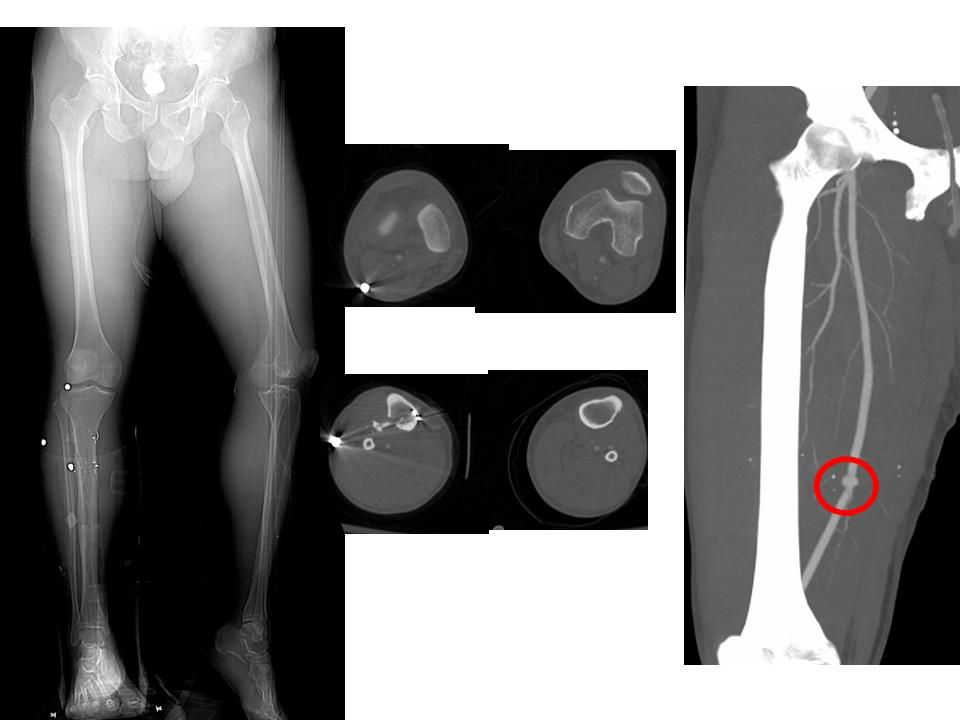CTA predicts healing of bone fractures
Findings of a study released Sunday at the 2009 RSNA meeting by researchers in Boston suggest CT angiography could help radiologists identify the factors that keep some types of lower extremity fractures from healing faster and better than other, similar lesions.
Findings of a study released Sunday at the 2009 RSNA meeting by researchers in Boston suggest CT angiography could help radiologists identify the factors that keep some types of lower extremity fractures from healing faster and better than other, similar lesions.
“Nonunion fracture can be a devastating clinical outcome,” said principal investigator Dr. Kevin P. Donahue, a radiology resident at Boston University.
“It’s important to identify anything that could potentially cause this kind of outcome, not only to prepare the patients for the possibility that this may be where their clinical situation is headed, but also to prepare our clinical colleagues,” Donahue said in an exclusive interview with Diagnostic Imaging.
Donahue and colleagues analyzed 230 cases of fractures from the hip through the ankle from 193 patients (149 male, 44 female) who were enrolled by their institution from January 2006 through December 2008. Patients underwent 64-slice CTA at the University’s level I trauma center and were classified according to the following factors:
- age
- open fracture(s)
- presence of vascular injury
- presence and extent of atherosclerosis in the lower extremities
The investigators compared previous findings with a subsequent series of x-rays that evaluated successful healing or nonunion. They used a statistical tool to measure the correlation between these factors and healing. They found a stronger association between nonunion and fractures with vascular injuries.

X-ray of a patient with lower extremity fractures from shotgun injuries reveals a pseudo-aneurysm of the femoral artery that was later associated with nonunion. (Provided by K. Donahue)
Donahue’s group found no relationship between patient age or degree of atherosclerosis with healing failure. And despite the morbidity and complexity associated with open fractures, there was no significant association between these lesions and nonunion. Three of five cases of nonunion were correlated with vascular injury. The association was statistically significant (p = 0.059).
“In the traumatic setting of individuals with lower extremity fractures, CT angiography definitely plays a role to define clinical outcomes and the intervening steps when the patient is in the hospital,” Donahue said.
Meta-Analysis Shows Merits of AI with CTA Detection of Coronary Artery Stenosis and Calcified Plaque
April 16th 2025Artificial intelligence demonstrated higher AUC, sensitivity, and specificity than radiologists for detecting coronary artery stenosis > 50 percent on computed tomography angiography (CTA), according to a new 17-study meta-analysis.
Could Lymph Node Distribution Patterns on CT Improve Staging for Colon Cancer?
April 11th 2025For patients with microsatellite instability-high colon cancer, distribution-based clinical lymph node staging (dCN) with computed tomography (CT) offered nearly double the accuracy rate of clinical lymph node staging in a recent study.
The Reading Room: Racial and Ethnic Minorities, Cancer Screenings, and COVID-19
November 3rd 2020In this podcast episode, Dr. Shalom Kalnicki, from Montefiore and Albert Einstein College of Medicine, discusses the disparities minority patients face with cancer screenings and what can be done to increase access during the pandemic.
AMA Approves Category III CPT Codes for AI-Enabled Perivascular Fat Analysis from CT Scans
April 9th 2025Going into effect in 2026, the new CPT codes may facilitate increased adoption of the CaRi-Heart software for detecting coronary inflammation from computed tomography scans pending FDA clearance of the technology.
FDA Clears AI Assessment of Ischemic Core Volume on CT with Brainomix 360 Platform
April 8th 2025For patients with acute ischemic stroke, research has demonstrated that automated assessment of ischemic core volume on brain CT scans via the Brainomix 360 software is equivalent to that derived from CT perfusion.